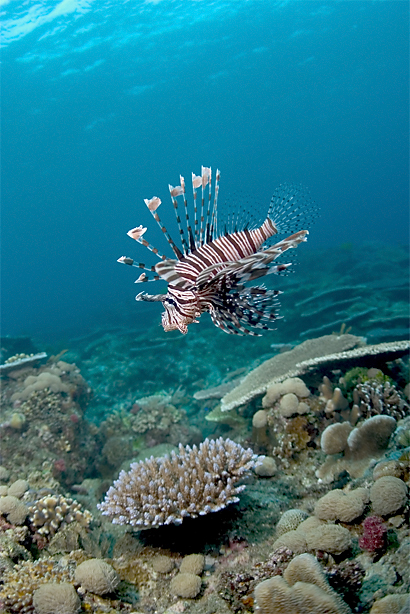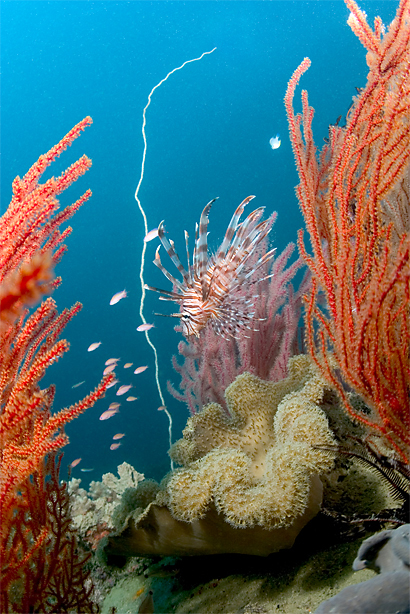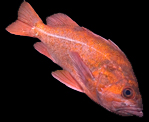
Lionfish, Pterois sp.

Lionfish (Pterois sp.) like this one are poor swimmers. For defense they
rely upon their large array of venomous spines rather than their speed. Once a
lionfish has been discovered, it's usually not difficult to get quite close to
it. However, obtaining a pretty photograph is a bit of a challenge since
lionfish usually stay quite close to some benthic structure and often turn their
tail (and thus the points of their spines) toward their observer. Patience and
careful body positioning may be required to get a shot that has a uniform
background that will nicely highlight the lionfish's complex silhouette.
"Wewak and Madang", Papua New Guinea
August 20, 2005

Lionfish, (Pterois sp.). Lionfish spines contain some really nasty venom.
The photographer had a pit in his stomach and fear in his heart as he took this
shot. It wasn't the fish pictured that was the cause for concern, but, rather,
its identical twin hovering disturbingly close to the photographer's bare cheek.
I suspect I would have let this shot go if Golden Dawn skipper Craig de
Wit had recited his account of being stung by a blue-spotted stingray before we
did this dive rather than after. It seems that pretty much everything underwater
in New Guinea is capable inflicting pain. It was weeks after I returned home to
San Francisco before my hands, swollen and raw from twelve days of incidental
contact with various stinging nasties, healed completely.
"Wewak and Madang", Papua New Guinea
August 21, 2005





